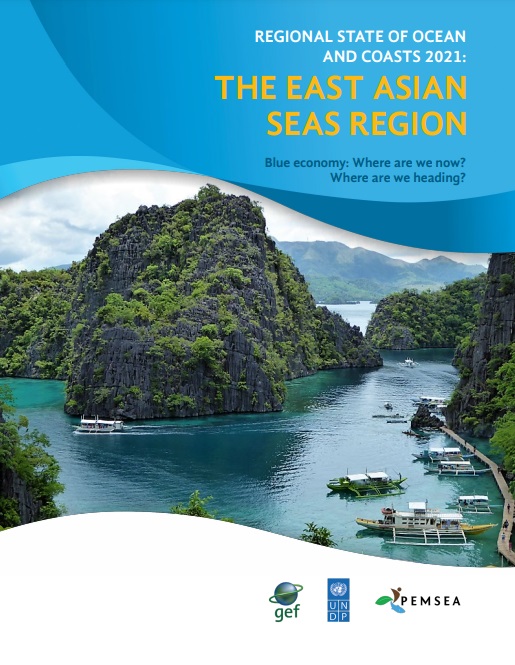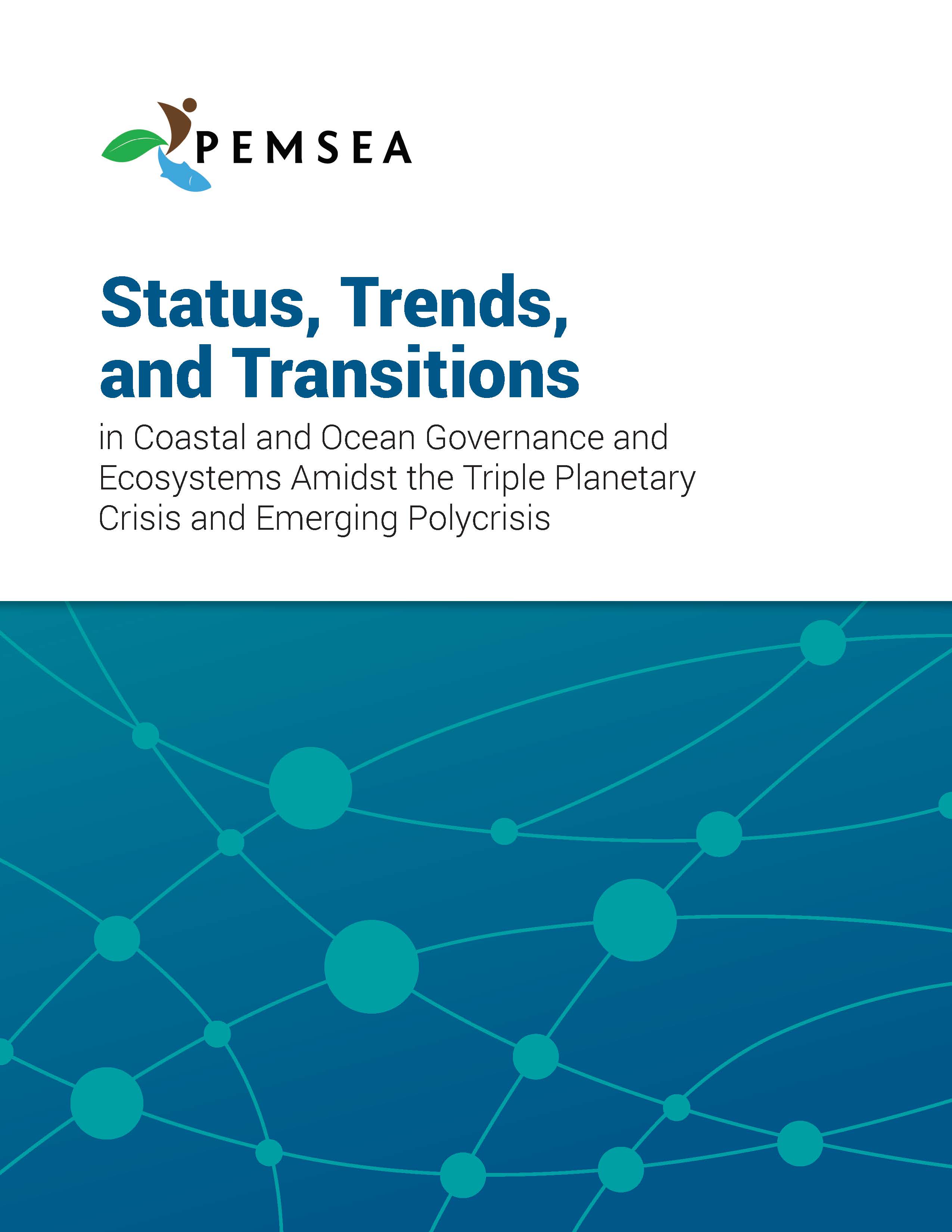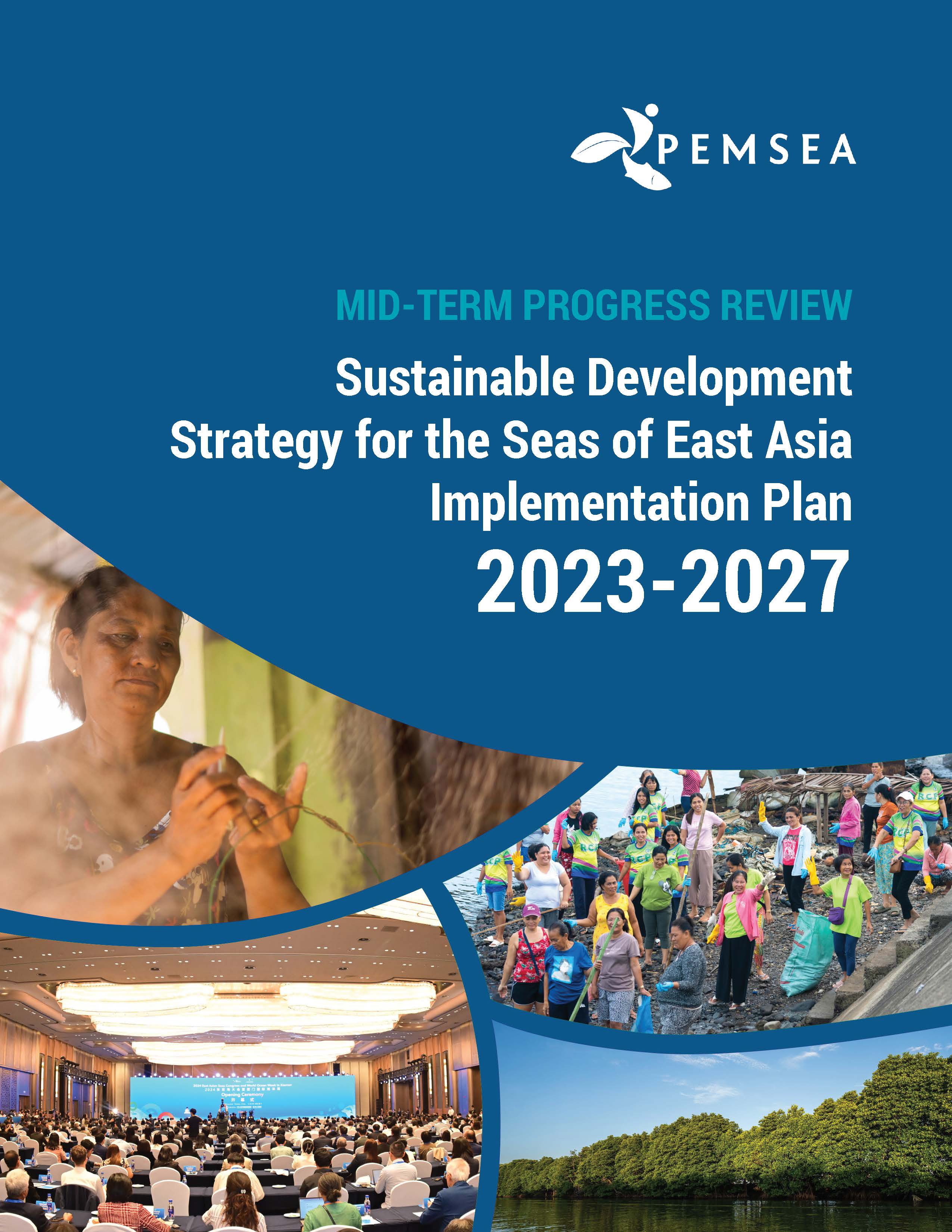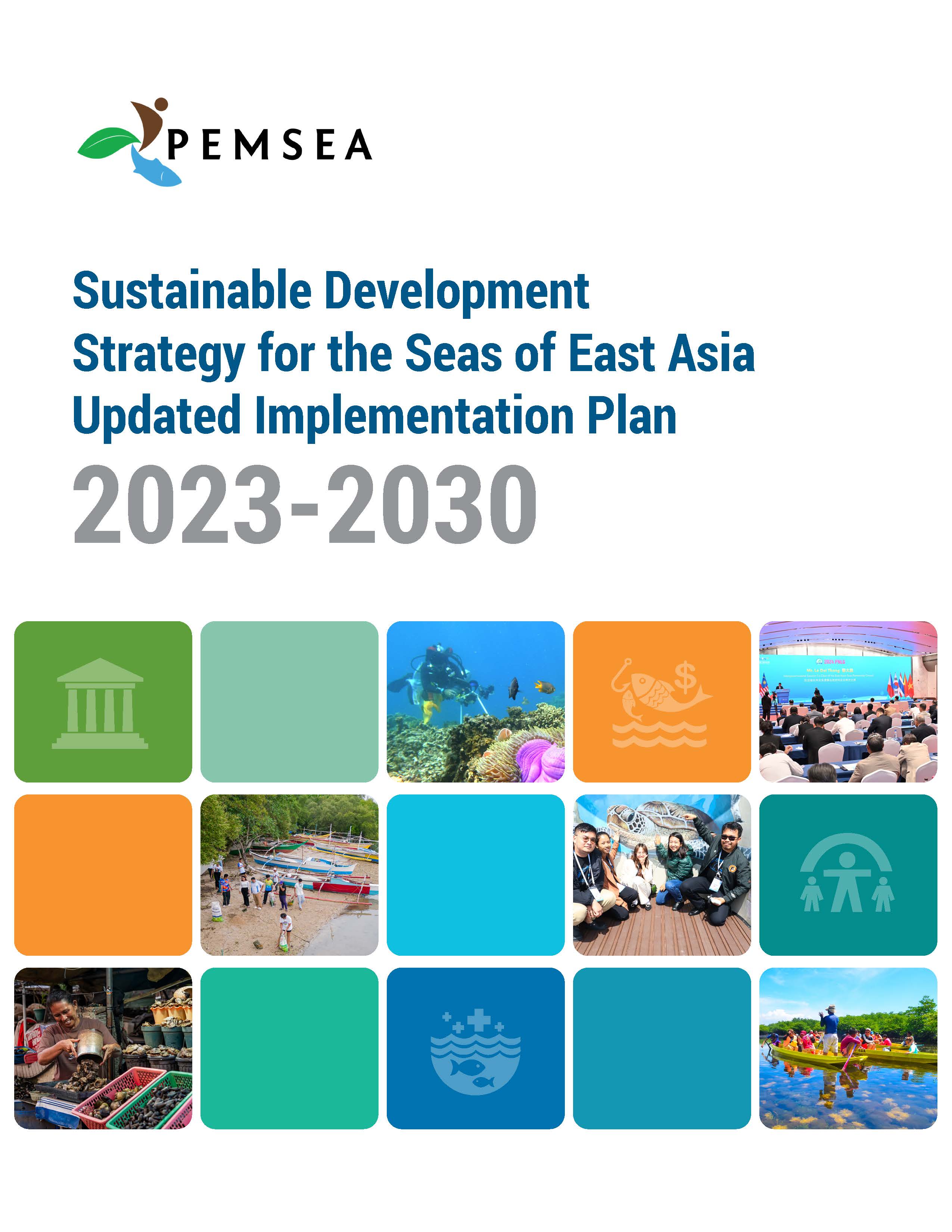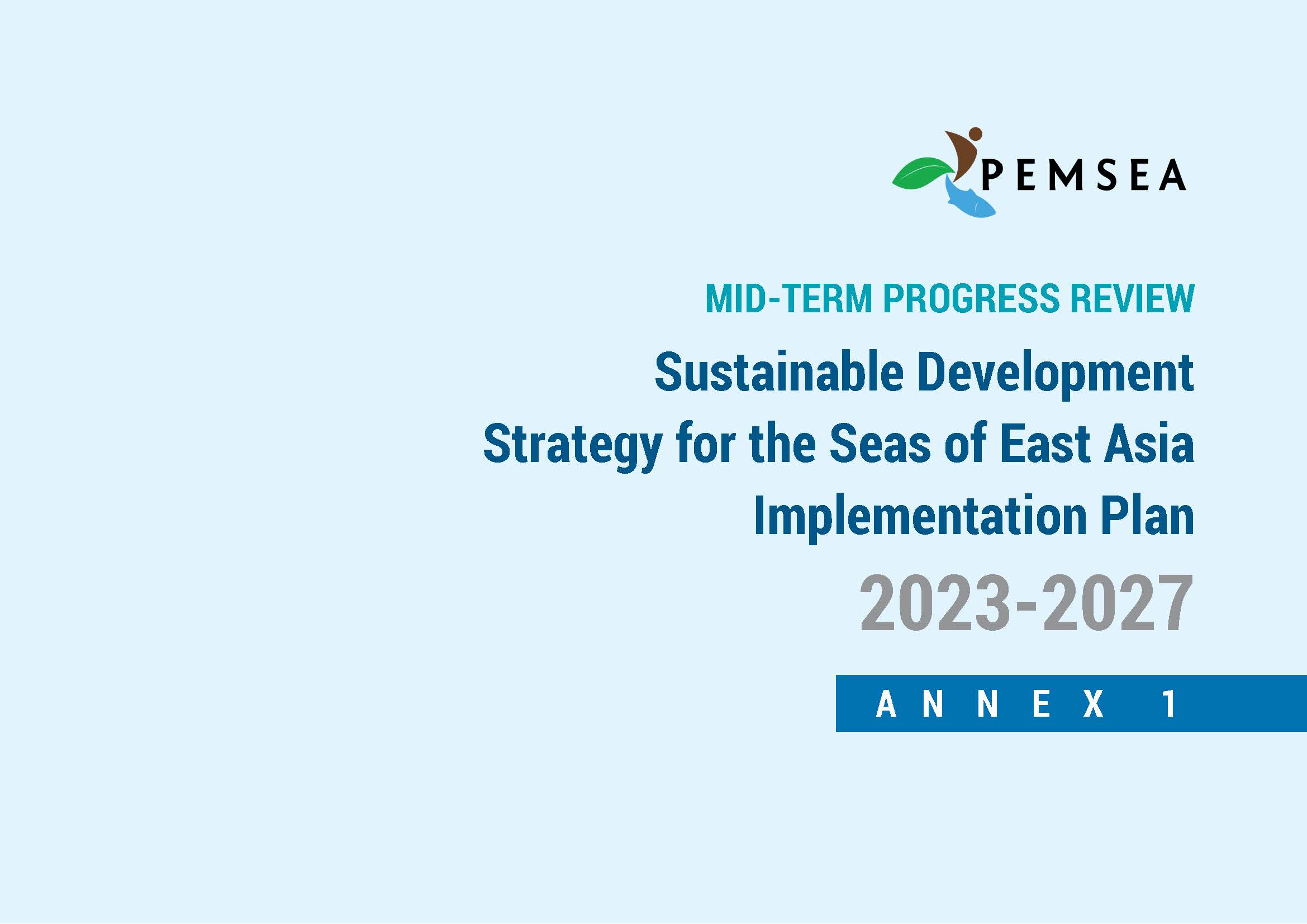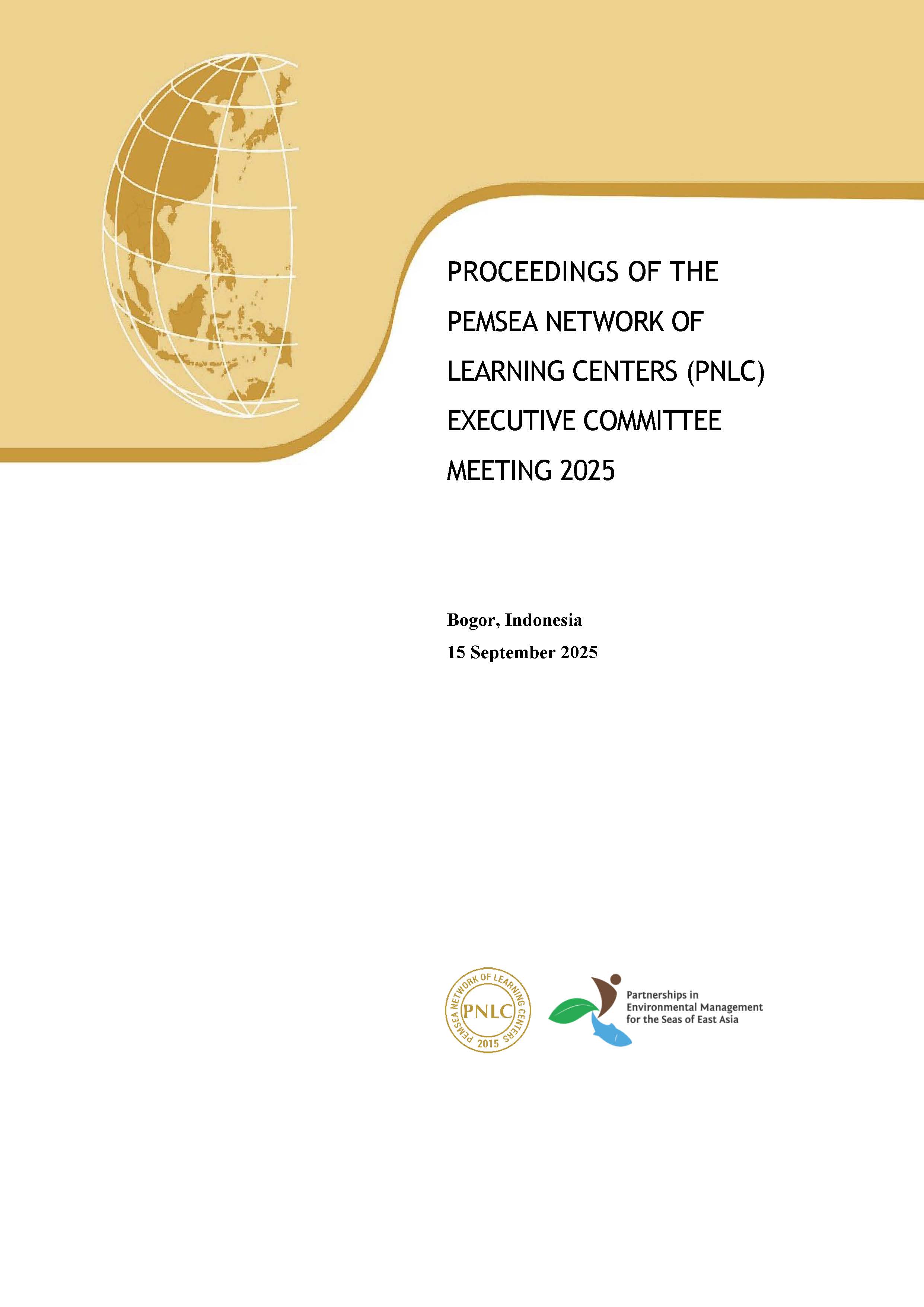
Breadcrumb
Regional State of Ocean and Coasts 2021: The East Asian Seas Region (VOLUME 1)
PUBLICATION DATE:
Thursday, December 02, 2021
PUBLICATION TYPE:
Books
STATUS:
Only Available Online
DESCRIPTION:
The ocean covers 70% of the surface of our blue planet and constitutes >95% of the biosphere. Life originated in the ocean, and it continues to support all life today by generating oxygen, absorbing carbon dioxide, recycling nutrients, regulating global climate and temperature, and providing food, energy, water, and other resources.
The ocean wealth of the EAS region.
Ocean in the national income accounts. The ocean economy in the EAS region is around US$1.5 trillion in value added in 2015.
Employment in the ocean economy. There are 61 million people directly employed in the ocean economy, however, more are dependent on the ocean for their livelihoods as small-scale, household, and informal activities are not included in the current accounts.
Blue capital and coastal and marine ecosystem services. The EAS region is home to a third of the world’s mangrove forests, seagrass beds, and coral reefs. These coastal and marine ecosystems, together with the tidal flats and salt marshes, are estimated to be worth around US$2 trillion. The blue carbon value is estimated to be US$68 billion for mangroves and US$40 billion for seagrass.
But our ocean is under stress… from climate change, pollution, habitat and biodiversity loss, overfishing and destructive fishing, and other unsustainable human activities. Bold and innovative actions are needed to protect ocean health, build more sustainable and resilient economies, reduce poverty, and help the most vulnerable.
Why blue economy?
The ocean has a major role to play in humanity’s future. As the EAS Region is gearing up to recover from the COVID-19 pandemic, the Blue Economy offers a development strategy anchored on sustainable and inclusive prosperity, low-carbon growth, and protection of ocean ecosystems to ensure food security, jobs and livelihoods, resiliency, recreation, and wellbeing. The blue economy can help the region by:
- Creating nature-based jobs, such as aquaculture, ecotourism, restoration of coastal habitats, and managing protected areas
- Offering new economic opportunities and jobs to reduce poverty through the sustainable development of key oceanic sectors, such as fisheries, aquaculture, tourism, ports, shipping, shipbuilding, and marine renewable energy, and their value-chains, and supporting new industries like marine biotechnology
- Helping the region to mitigate and adapt to climate change through blue carbon, offshore wind and ocean energy, decarbonization, and new technologies
- Fostering nature-based infrastructure, such as mangroves, to provide protection from coastal erosion, flooding, storm surge, tsunami, and other natural disasters (as well as other ecosystem services)Improving fisheries by addressing the underlying causes of overfishing and IUU fishing, and addressing aquaculture sustainability, quality, and safety
- Mitigating the threats to human and ocean health due to marine pollution, including nutrients and marine and land-based plastics, through establishment of more wastewater treatment facilities with reuse applications, integrated solid waste management systems, and reuse of plastics and other recyclables
- Advocating the inclusion of women, small-scale fishers, informal workers (such as those in the aquaculture, ports, shipping, tourism, trade and logistics industries)Advancing connectivity and trade through ports, shipping, submarine communications, and digitalization
- Promoting science, innovation, and technologies to transform the ocean economic sectors to become sustainable, climate-smart, low-carbon, resilient, and more efficient and productive
- Promoting sustainable ocean financing and new financing modalities to support climate action, biodiversity conservation, and blue economy development.
- Informing policymakers and stakeholders about the value of the ocean, and the need for bold actions now for the benefit of the future generations
More information in the brochure. A Supplemental Report is also available.
RELATED PUBLICATIONS
Status, Trends, and Transitions in Coastal and Ocean Governance and Ecosystems Amidst the Triple Planetary Crisis and Emerging Polycrisis
This comprehensive research report was developed to inform the updating of the Sustainable Development Strategy for the Seas of East Asia (SDS-SEA) Implementation Plan 2023-2030 by synthesizing recent global, regional, and national developments. It examines the interconnected threats of the triple planetary crisis - climate change, biodiversity loss, and pollution - as well as the broader polycrisis of economic and geopolitical instability affecting coastal and ocean governance, including in the East Asian Seas region. The report also assesses the status and trends of traditional and emerging blue economy sectors and outlines the importance of strengthened data and monitoring systems, research and development, policy alignment, and innovative financing as strategic priorities to support a resilient and sustainable ocean future. Ultimately, the report supports the development and refinement of future strategies, particularly the updating of the SDS-SEA Implementation Plan to 2030. Overall, the report highlights PEMSEA’s critical role as a regional integrator in East Asia, bridging local priorities with global commitments to address rapidly evolving challenges and emerging opportunities in coastal and ocean governance and development.
Mid-Term Progress Review of the PEMSEA SDS-SEA Implementation Plan 2023-2027
The Mid-Term Progress Review of the PEMSEA SDS-SEA Implementation Plan (IP) 2023-2027 is an evidence-based assessment covering 2023 to June 2025 that aims to evaluate implementation status, identify challenges, and inform the refinement of the plan toward 2030. The review covers key initiatives of PEMSEA Country and Non-Country Partners, networks, collaborators, and the PEMSEA Resource Facility (PRF), in line with the agreed targets of the SDS-SEA IP.Under Component 1 (Effective Governance), the review highlights the strengthening of PEMSEA’s regional mechanisms through increased voluntary contributions, delivery of various capacity-building initiatives, increasing alignment of PEMSEA Country Partners’ policies and programs with global sustainable and ocean-related commitments, and the increasing project portfolio under PRF management. Progress for Component 2 (Healthy Ocean) is characterized by the expansion of Integrated Coastal Management (ICM) along with other area-based integrated management approaches, the support of PRF-managed projects in biodiversity conservation, fisheries management, land-based and sea-based pollution reduction, waste management, and efforts related to disaster risk reduction and climate change adaptation including the launch of the PEMSEA Blue Carbon Program. Regarding Component 3 (Healthy People), the review emphasizes inclusive stakeholder engagement through the new GESI Action Plan and the success of localized sustainable livelihood programs through PRF-managed projects that have improved community resilience. Finally, for Component 4 (Healthy Economies), the review notes the increasing integration of blue economy principles into national strategies and the adoption of the 2024 Xiamen Declaration, which helps facilitate synergistic actions and sustainable blue financing and public-private partnerships.
Sustainable Development Strategy for the Seas of East Asia (SDS-SEA) Implementation Plan 2023-2030
The Sustainable Development Strategy for the Seas of East Asia (SDS-SEA) Updated Implementation Plan 2023-2030 was established to extend the previous plan's timeframe to 2030, ensuring the continued relevance, effectiveness, and long-term sustainability of PEMSEA’s initiatives while enhancing organizational effectiveness, financial sustainability, and operational efficiency. The updating process was driven by several supporting efforts, including the mid-term progress review of the SDS-SEA IP 2023-2027, a review of status and trends in coastal and ocean governance, results from PEMSEA’s Organizational Capacity Assessment (OCA), and consultations with PEMSEA Country and Non-Country Partners. To bolster results-based management, the plan introduces a Strategy Map and Balanced Scorecard (BSC) as high-level tools for leadership to provide overall strategic direction across four key perspectives: Stakeholder Engagement, Programs and Processes, Learning and Growth, and Financial Sustainability. These high-level tools are supported by a detailed Strategic Results Framework (SRF), which guides operational implementation and performance tracking, with results from the SRF feeding upward to systematically inform the BSC and Strategy Map. Overall, the updated plan is focused on seven Strategic Objectives that are periodically monitored via a two-tiered system with support from various partners and networks, ensuring the plan remains fit for purpose and serves as a guide for adaptive management.
Annex 1 of the Mid-Term Progress Review of the PEMSEA SDS-SEA Implementation Plan 2023-2027
The Annex 1 of the Mid-Term Progress Review of the PEMSEA SDS-SEA Implementation Plan (IP) 2023-2027 is the detailed progress report on each target outcomes from 2023 to 2025 and the remaining target actions and outcomes leading to 2030.
PEMSEA NETWORK OF LEARNING CENTERS (PNLC) 2025 Executive Committee Meeting Proceedings
The 2025 PNLC Executive Committee (PNLC EC) Meeting was organized by PNLC Secretariat on 15 September 2025 in Bogor, Indonesia. It was participated by Prof. Yonvitner of the Center for Coastal and Marine Resources Studies of the IPB University (CCMRS-IPB) and President of the PNLC, Dr. Fang Qinhua, Deputy Director of the Coastal and Ocean Management Institute of Xiamen University (COMI-XU) and Vice-President of the PNLC, and Ms. Aimee T. Gonzales, PEMSEA Resource Facility (PRF) Executive Director as members of the PNLC Executive Committee. Ms. Isdahartatie PNLC secretariat Coordinator/ CCMRS-IPB University, Ms. Nancy Bermas from PRF, Francesca Cortez (PRF Secretariat Assistant) and Lusita Meilana, PNLC Secretariat staff. The meeting was chaired by Prof. Yonvitner. Ms. Isdahartati served as the Secretariat of the meeting.
The following supporting documents are annexed to these proceedings:
- Annex 1: Meeting Agenda / Program
- Annex 2: Links to the meeting documents, presentation and photos
- Annex 3: List of participants
